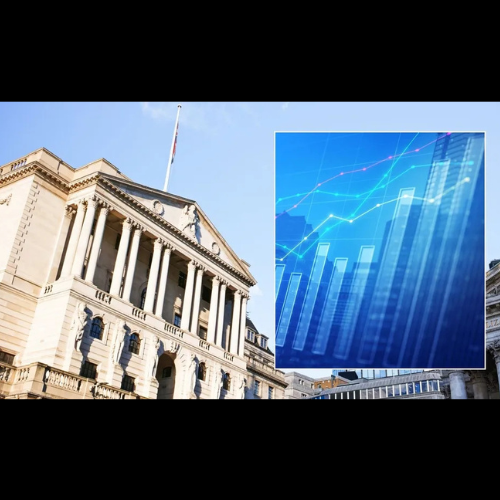In an interconnected world, geopolitical and economic events have a profound influence on global markets. Recent developments—from political tension in the U.S. to economic challenges in Peru, and China’s ongoing trade disputes—are causing shifts in investor sentiment. Adding to this are the actions of central banks, such as the Federal Reserve and the Bank of Canada, which are navigating the delicate balance between inflation control and economic growth. These dynamics raise crucial questions about the future direction of financial markets and how individuals and economies alike can brace for impact.
The Political Storm in the U.S.: Assassination Attempts and Market Reactions
In an extraordinary development, reports have surfaced that the FBI is investigating an assassination attempt on former President Donald Trump. Shots were reportedly fired outside Trump International Golf Course in West Palm Beach. This revelation comes on the heels of a prior incident and has thrown political stability in the U.S. into question once again. Such incidents create an environment of unpredictability, and markets generally dislike uncertainty.
While it’s too soon to assess the full impact of this event on financial markets, historical precedents suggest that political turmoil of this nature can lead to short-term market volatility. For instance, the 2021 U.S. Capitol riot saw a temporary dip in stock futures, as investors grappled with uncertainty over the nation’s political future. Market sentiment often fluctuates based on the level of perceived risk, and the FBI’s ongoing investigations into the safety of a high-profile political figure like Trump may increase market jitters. Investors may start looking for safe havens such as gold or government bonds, which tend to perform well during times of instability.
More broadly, political violence and unrest can dampen investor confidence, not only in the U.S. but also globally, as American political developments are closely watched by international markets. Global investors often look to the U.S. for signs of stability and confidence, so any perceived unrest could lead to a broader flight from riskier assets like equities and into more secure investment options.
Peru’s Economic Resilience Amid Political and Social Challenges
While political uncertainty in the U.S. garners attention, economic developments in Peru offer an interesting counter-narrative. The country’s economy expanded for the fourth consecutive month in July 2024, highlighting resilience despite ongoing political and social challenges. This growth is largely driven by a recovery in mining and exports, two sectors crucial to Peru’s economy.
Peru’s ability to sustain economic growth offers a valuable lesson for other emerging markets. Even in the face of social unrest and political instability, a strong foundation in critical industries like mining can serve as a buffer against external shocks. Investors looking for opportunities in emerging markets may see Peru as a viable option, especially given its continued growth trajectory. However, the nation remains vulnerable to external pressures, such as commodity price fluctuations and global demand, which could shift based on larger economic trends like the performance of the Chinese economy.
Bank of Canada and the Prospects of Rate Cuts
Turning to North America, the Bank of Canada is also making waves, as Governor Tiff Macklem raised the possibility of faster rate cuts. This shift in policy comes after a prolonged period of rate hikes aimed at curbing inflation. Canada, like many countries, has been grappling with high inflation rates for the past two years, but recent indicators suggest inflation may be slowing.
Should the Bank of Canada move forward with aggressive rate cuts, it could provide a significant stimulus to the Canadian economy. Lower rates make borrowing cheaper for both consumers and businesses, encouraging spending and investment. This would likely boost economic activity, but the central bank must carefully balance this against the risk of reigniting inflation. The potential for a rate cut could also affect the Canadian dollar, which has remained relatively strong in recent months.
For investors, the Bank of Canada’s decision will be crucial. A rate cut could boost Canadian equities, particularly in interest-rate-sensitive sectors like housing and consumer goods. However, the timing of such cuts will depend heavily on upcoming inflation data and other macroeconomic indicators.
China and U.S. Trade Tensions Continue to Loom
Meanwhile, in the Asia-Pacific region, China’s economic stance remains a central issue for global markets. Beijing recently reiterated its opposition to U.S. tariff hikes and vowed to take steps to defend its companies’ interests. These tensions, part of the ongoing U.S.-China trade war, continue to cloud the global economic outlook.
China’s economic growth has been slowing, and the imposition of new tariffs could exacerbate this trend. The tariffs not only hinder China’s exports but also make it more expensive for Chinese companies to operate in the U.S. market. These headwinds come at a time when China is already grappling with a housing market slump and weakening consumer demand. Should China take retaliatory measures against the U.S., the ripple effects could be felt across global markets, particularly in sectors like technology and manufacturing that are heavily reliant on Chinese production.
The trade dispute also underscores the broader theme of deglobalization. Companies are increasingly looking to diversify their supply chains away from China to reduce exposure to potential tariffs and political risks. This shift could have long-term implications for global trade patterns and economic growth.
U.S. Federal Reserve: A Tipping Point for Interest Rates
Lastly, all eyes are on the Federal Reserve, which is expected to begin cutting interest rates soon after a long period of aggressive rate hikes. The central bank has been raising rates to combat inflation, but with inflationary pressures easing, many expect the Fed to adopt a more dovish stance. However, the size and speed of these rate cuts remain in question.
The Fed’s next move will have profound implications for both the U.S. and global economies. A rate cut could stimulate economic activity by making credit more accessible, but it also risks weakening the U.S. dollar. Additionally, cutting rates too quickly could spark concerns about the Fed’s ability to manage inflation, which might remain above the central bank’s 2% target.
Investors are closely monitoring the Fed’s language for any signs of policy shifts. A more aggressive rate-cutting stance could boost risk assets like stocks, while a more cautious approach might lead to a prolonged period of uncertainty. With global inflation on the decline, the Fed’s actions will set the tone for other central banks, potentially creating a ripple effect throughout the world’s financial markets.
Conclusion: Navigating an Era of Uncertainty
The global economic landscape is increasingly complex, shaped by an intricate web of political events, economic shifts, and central bank decisions. From the FBI’s investigation into an assassination attempt on Donald Trump to Peru’s unexpected economic growth and the Bank of Canada’s rate cut prospects, investors have much to consider as they chart their course in the coming months.
The U.S.-China trade war and the Federal Reserve’s interest rate policies add additional layers of uncertainty, each capable of driving significant market movements. In such an environment, investors must stay informed and be prepared to adapt to rapid changes. Safe havens like gold or bonds may offer protection against short-term volatility, but opportunities in emerging markets like Peru or sectors influenced by central bank policies—such as Canadian equities—present potential growth areas.
As these global dynamics continue to unfold, the next few months will be critical in shaping the future of financial markets, making it an essential time for investors to remain vigilant, diversified, and responsive to both risks and opportunities.
by Steve Macalbry
Senior Editor,
BestGrowthStocks.Com
Disclaimer: The author of this article is not a licensed financial advisor. This article is intended for informational purposes only. It should not be considered financial or investment advice. We have not been compensated for the creation or distribution of this article and we do not hold any form of equity in the securities mentioned in this article. Always consult with a certified financial professional before making any financial decisions. Growth stocks carry a high degree of risk, and you could lose your entire investment.







